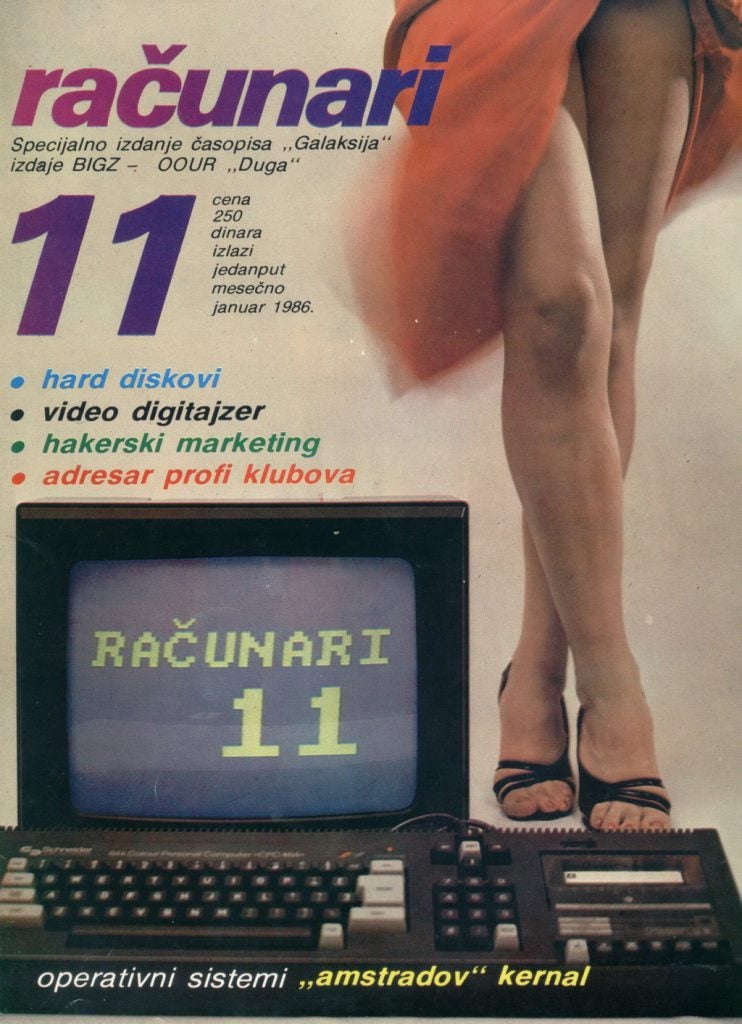In the 1980s in Yugoslavia, there was no Maxim. There was no PCMag either. There was, however, Računari, which could best be described as Maxim meets PCMag. Serbian for “computer,” Računari was well-known for its suggestive covers featuring scantily-clad Slavic women alongside some kind of computing hardware. For instance:

According to redditor swaggedoutshorty, who recently posted a bunch of Računari covers to Reddit, the reason for the women on the covers was twofold: 1) Sex sells (obviously); and 2) notoriety. As one of the original writers of the magazine put it, “Criticism is better than indifference.”
Računari published its first issue in January 1984, the cover of which was fairly ordinary — just a picture of a computer and a keyboard. But by the end of that year, the female cover models started appearing, and by 1988, it was very much an intentional month-in, month-out choice.


Amazingly, the magazine continued to run — with a seductively-posed woman on each cover — all throughout the violent breakup of Yugoslavia in the early 1990s (save for a missed issue here and there). “So it is that these otherwise mirthful images have a darker story to tell, of consumers seeking out computing products during a bloody civil war and the advertisers and retailers wishing to serve them,” Martin Schneider wrote of Računari on Dangerous Minds in 2017.


It wasn’t war, though, that ultimately sank Računari. It was the dawn of the publishing woes that would eventually topple the American magazine industry, too — although that industry tried to gobble up the rest of the world’s magazine business first as an act of self-preservation. “I’m a computer nerd so I like reading up on old computers before the Microsoft Windows takeover in the 1990s,” swaggedoutshorty tells me. “After that, all local magazines basically went under and were replaced by localized versions of American magazines, which had their own less unique aesthetics.”

Računari published its last issue in February 1999. It’s obviously as dated now as an Apple IIGS and other clunky, garish early tech. But it tells the story of the deeply entwined history of sex, tech and publishing better than a machine ever could.

